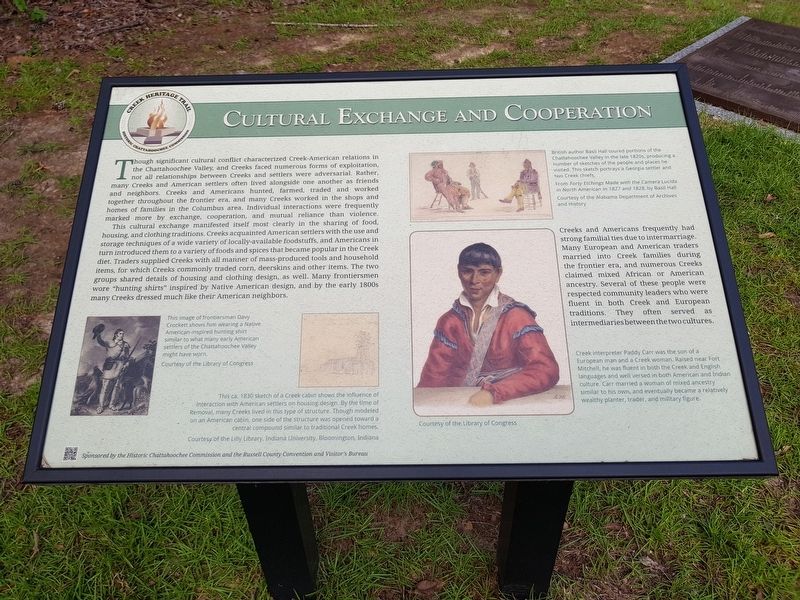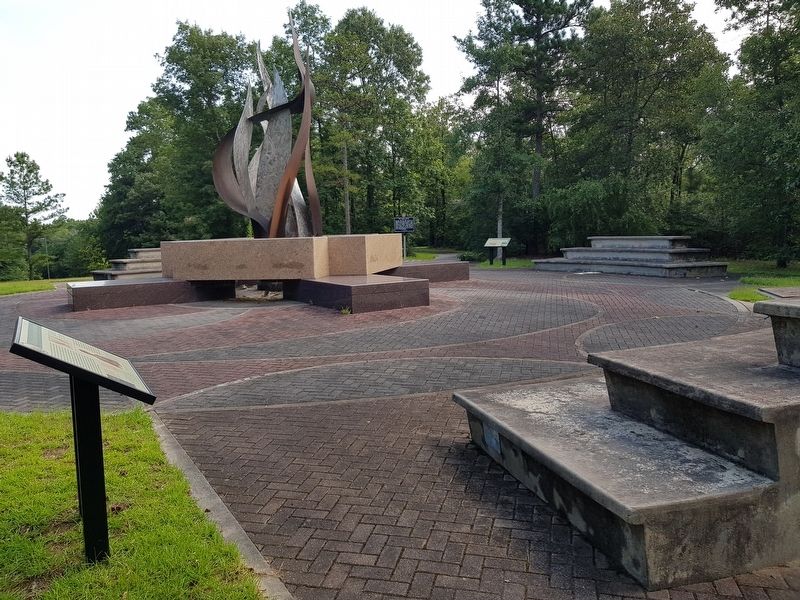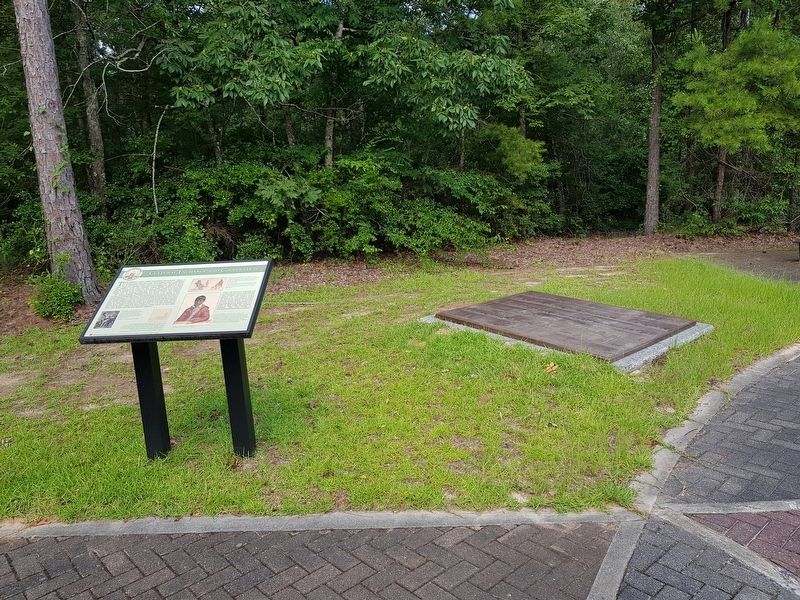Fort Mitchell in Russell County, Alabama — The American South (East South Central)
Cultural Exchange and Cooperation
Creek Heritage Trail
— Historic Chattahoochee Commission —
Cultural Exchange and Cooperation
Though significant cultural conflict characterized Creek-American relations in the Chattahoochee Valley, and Creeks faced numerous forms of exploitation, not all relationships between Creeks and settlers were adversarial. Rather, many Creeks and American settlers often lived alongside one another as friends and neighbors. Creeks and Americans hunted, farmed, traded and worked together throughout the frontier era, and many Creeks worked in the shops and homes of families in the Columbus area. Individual interactions were frequently marked more by exchange, cooperation, and mutual reliance than violence.
This cultural exchange manifested itself most clearly in the sharing of food, housing and clothing traditions. Creeks acquainted American settlers with the use and storage techniques of a wide variety of locally-available foodstuffs, and Americans in turn introduced them to a variety of foods and spices that became popular in the Creek diet. Traders supplied Creeks with all manner of mass-produced tools and household items, for which Creeks commonly traded corn, deerskins and other items. The two groups shared details of housing and clothing design, as well. Many frontiersmen wore "hunting shirts" inspired by Native American design, and by the early 1800s, many Creeks dressed much like their American neighbors.
Creeks and Americans frequently had strong familial ties due to intermarriage. Many European and American traders married into Creek families during the frontier era, and numerous Creeks claimed mixed African or American ancestry. Several of these people were respected community leaders who were fluent in both Creek and European traditions. They often served as intermediaries between the two cultures.
Captions:
This image of frontiersman Davy Crockett shows him wearing a Native American-inspired hunting shirt similar to what many early American settlers of the Chattahoochee Valley might have worn.
Courtesy of the Library of Congress
This ca. 1830 sketch of a Creek cabin shows the influence of interaction with American settlers on housing design. By the time of Removal, many Creeks lived in this type of structure. Though modeled on an American cabin, one side of the structure was opened toward a central compound similar to traditional Creek homes.
Courtesy of the Lilly Library, Indiana University, Bloomington, Indiana
British author Basil Hall toured portions of the Chattahoochee Valley in the late 1820s, producing a number of sketches of the people and places he visited. This sketch portrays a Georgia settler and two Creek chiefs.
From Forty Etchings Made with the Camera Lucida in North American
in 1827 and 1828, by Basil Hall
Courtesy of the Alabama Department of Archives and History
Creek interpreter Paddy Carr was the son of a European man and a Creek woman. Raised near Fort Mitchell, he was fluent in both the Creek and English languages and well versed in both American and Indian culture. Carr married a woman of mixed ancestry similar to his own, and eventually became a relatively wealthy planter, trader, and military figure.
Courtesy of the Library of Congress
Sponsored by the Historic Chattahoochee Comimission and the Russell County Convention and Visitor's Bureau
Erected by Historic Chattahoochee Commission and the Russell County Convention and Visitor’s Bureau.
Topics. This historical marker is listed in this topic list: Native Americans. A significant historical year for this entry is 1830.
Location. 32° 20.655′ N, 85° 1.283′ W. Marker is in Fort Mitchell, Alabama, in Russell County. Marker can be reached from Unnamed Road, 0.1 miles east of Alabama Route 165 when traveling east. Marker is located near the Chattahoochee Indian Heritage Center Monument adjacent to Fort Mitchell National Historic Landmark Site. Touch for map. Marker is in this post office area: Fort Mitchell AL 36856, United States of America. Touch for directions.
Other nearby markers. At least 8 other markers are within walking distance of this marker. The Census of 1832 (a few steps from this marker); Fort Mitchell and Creek Removal
(a few steps from this marker); Creek Towns (within shouting distance of this marker); The Creek Nation / The Chattahoochee Indian Heritage Center (within shouting distance of this marker); Indian Ball Ground (within shouting distance of this marker); J.W. and Ethel I. Woodruff Foundation Interpretive Trail (within shouting distance of this marker); Pokkecheta, or the Ball Play (within shouting distance of this marker); Archaeology And Our Understanding of the Creek People (within shouting distance of this marker). Touch for a list and map of all markers in Fort Mitchell.
Credits. This page was last revised on July 11, 2018. It was originally submitted on July 11, 2018, by J. Makali Bruton of Accra, Ghana. This page has been viewed 307 times since then and 22 times this year. Photos: 1, 2, 3. submitted on July 11, 2018, by J. Makali Bruton of Accra, Ghana.


